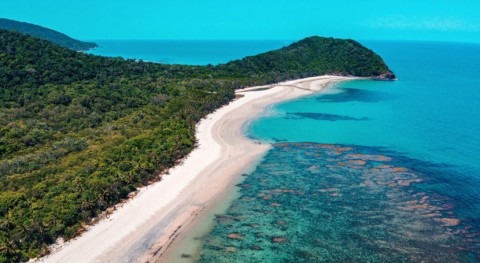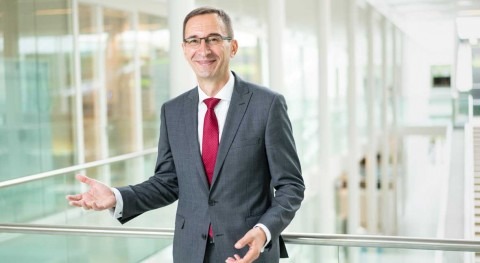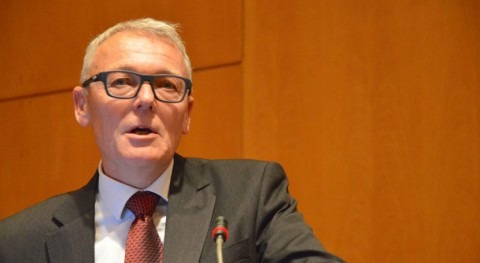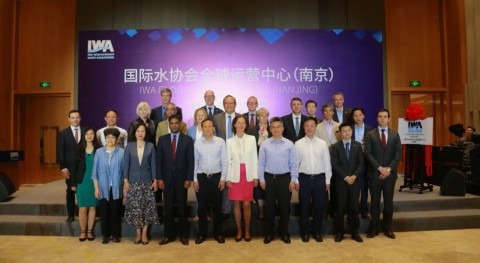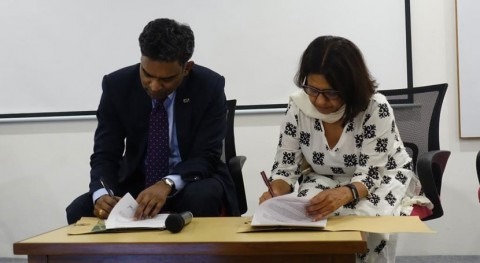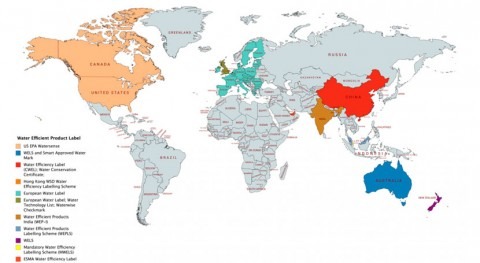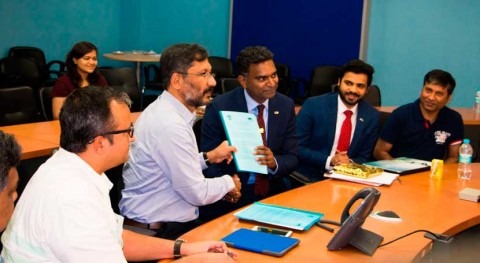Continuing with our cycle of interviews to the media relations directors of relevant water companies and non-profit organizations, we interview Marta Jiménez, Communications Officer at the International Water Association (IWA), to learn how the largest network of water professionals around the world communicates about this precious resource.
Question: Firstly, we would like to know briefly your career path.
Answer: I studied journalism in Madrid, and went on an Erasmus exchange to The Hague. During my university years, I took various internships and collaborations in different types of communication media, such as radio, television, print press and digital to get a feel of where I fit in the media landscape. I moved back to The Hague for an internship at IDEAS Magazine, a real playground to explore creative writing, while collaborating on a radio programme and developing advocacy communications in a foundation focused on fostering dialogue for the promotion of just international relations. I then did my Master’s degree in International Relations in Amsterdam, and worked for an association developing strategic communications and digital engagement on developmental issues before joining the International Water Association (IWA) in 2015 as Communications Officer.
Q: What is your role within IWA?
A: The core of what I do at IWA is to explain and show why the work of our interdisciplinary community of water professionals matters to the society at large.
Engaging with our members, I’m responsible for the creation and sharing of IWA multi-channel content across all our digital and social media platforms to inform about innovations, practical know-how and sustainable solutions throughout the entire water cycle that can help us reduce reuse and replenish our precious water resources.
It involves developing communications and engagement strategies to build bridges between water-related science, policy and practice, so that knowledge and expertise are spread to varied audiences, and shared across geographies, disciplines and sectors.

A vital component of my communications work at IWA is also to enhance public awareness of the Sustainable Development Goals, primarily SDG 6, and mobilizing public participation in decision-making processes that concern the future of water - from raising awareness on the human rights to water and sanitation, how to implement them and support others in fulfilling them; educating about the importance of restoring the ecosystems that provide the water supplies we depend on, or equipping the next generation of water leaders with the right skills, network, and career development opportunities.
Overall, it’s about fulfilling the mission of IWA as a membership association designed to connect actors with a stake in the future of water, linking knowledge and action so that water resources are wisely, equitably and sustainably managed.
What I find fascinating about communicating about water is that it cuts across all sectors - utilities, industries, ecosystem services, agriculture, fishing, forestry, health, fashion, tourism, culture
Q: Why do you think it is important to communicate about water?
A: Water underpins every aspect of human and environmental existence. The severe water challenges facing the world today require an unprecedented and truly global response. This response needs to be informed by professional knowledge, accelerated through knowledge and innovation sharing, and truly representative of the dynamic social contexts in which we live, that is, a response that engenders decentralised and local-scale solutions.
For me, the importance of communicating about water lies in the power to co-design solutions to our shared water problems by giving representation to all perspectives, collating and combining the knowledge and experience of different stakeholders, put it under the judgment of critical assessment, enhance public participation in decision-making processes and mobilise financial and human resources to meet ambitious, yet achievable goals.
What I find fascinating about communicating about water is that it cuts across all sectors - utilities, industries, ecosystem services, agriculture, fishing, forestry, health, fashion, tourism, culture,… It transcends all boundaries and addresses the crucial connections between equality, justice, sustainability and dignity. At the same time, communicating about water is speaking of the passionate water and sanitation professionals who work daily to provide essential water and sanitation services. I believe communicating their stories is also essential to sensitise the population about the odysseys of delivering drinking water to one’s tap.
Q: How has the social media phenomenon influenced the way of communicating about water?
A: The Internet and social media networks have profoundly changed the communication landscape, resulting in new paradigms, where “the user becomes the axis of communication process, the content is the identity of media, multimedia is the new language, real-time is the only time, hypertext is the grammar, and knowledge is the new name of information”, as José Luis Orihuela, a Spanish professor of communications and digital transformations, explains in this article.
The Internet and social media networks have opened the way to a profound shift of the communications model of the 80s based on a passive unidirectional broadcast to a two-way dialogue communications. Under this new model, we no longer speak of passive audiences, but of users actively seeking for content that they need or consider helpful, while simultaneously becoming content producers. This has radically changed the relationship between organisations and their audiences/users. In this sense, IWA’s authoritative voice on water is both constructed and endorsed by the thousands of people that form part of our community online. Social media has transformed the role of IWA in the digital info-space into an amplifier of voices, ideas, research papers or the incredible work of our members and followers who post, share, like and interact with water-related news on social media.
Social media networks have enabled organisations like IWA to access knowledge from every corner of the world, as well as to further democratise access to knowledge that could otherwise remain within academic or professional circuits by hosting webinars and streaming our Congresses’ keynote speeches live, to name just a few.
It’s also granted us the capacity to engage, reach and influence people at an unprecedented scale and at incredible speeds. This coalesces into the capacity to use our positioning on social media as a vehicle for change. For example, we’ve seen the huge impact of social media campaigns in the reduction of water consumption in times of drought, an unprecedented awareness over the impact of plastic pollution in our oceans, or enhanced community resilience to prepare and respond to climate change impacts.
Digital media has not only changed the way we communicate about water – it has transfigured the communications professional into an artist in the media landscape of water communications. Social media networks have forced us to be more creative, agile and dynamic to produce enhanced visual formats that grab the attention of users already overexposed to thousands of other messages when scrolling down their Twitter, Facebook, LinkedIn or Instagram accounts.
Digital media has not only changed the way we communicate about water – it has transfigured the communications professional into an artist in the media landscape of water communications

Q: What are the main challenges your company faces when informing about the water sector?
A: One of the main communications challenges stems precisely from the proliferation of online information, where the selection, filtering, interpretation and sharing of relevant, trustworthy and quality content is essential not only for helping our readers navigate the chaos of abundance and keep them engaged, but also to advance science, innovation and decision-making for sustainable urban water management.
Another key challenge is striking the right balance between scientific rigour and the intelligibility of the message for the broader public, but this is also an excellent opportunity to stimulate curiosity and awe in issues that concern us all, and build essential capacities and competences among the people who will be in charge of our water future.
Similarly, bridging the apparently disconnected worlds of science, practice and policy is challenging at times, but IWA’s unique positioning in bringing together water utilities, regulators, technology providers, researchers, financiers and civil society organisations helps in fostering a common water-wise vision and find a common language to break up siloes.
Q: Has IWA ever faced a communications crisis? If so, what tools were used to mitigate these developments?
A: One of the most difficult moments IWA has faced recently had to do with our own digital transformation. In 2015-2016 IWA started to take bold steps to move towards the new digital world by creating a customised online platform, IWA Connect, destined to replicate, revive, amplify and connect our community of leading water professionals who used to meet in person at IWA events or collaborate at will over projects or peer-reviewed publications. The next step in this digital journey was to use this same social, community platform to manage the Association’s membership renewals and applications. The change of system, without enough anticipated engagement with many of our stakeholders and members was very painful and unsatisfactory for some. We can now critically look back at our own transition from digital hell to digital heaven, and learn from this communications crisis. This painstakingly reflection has also in part informed the development of a Digital Water Programme which aims at facilitating the digital journey for one of our main constituencies – water utilities.
The severe water challenges facing the world today require an unprecedented and truly global response
Q: What type of water news do you think the public is most interested in?
A: Overall, our network of water professionals is interested in what’s new in their respective fields, whether it’s the latest research on micropollutants, arsenic technology research, best practices on water reuse or more sustainable and advanced desalination technology solutions. What I’ve experienced from interacting with water professionals is that they are as interested in what works, case studies that show success of a given approach or technology, as they are in what doesn’t work, challenges and failures to learn from.
We also observe that the more specialised the content is, the more engagement it generates among our members. At the same time, many of our readers and followers on social media are not strictly water sector professionals. As the emotional creatures we are, I believe readers also find immediate connection with news that portrays the two spectrums of human and environmental possibilities: disasters, crisis and risks, on one hand, and heroic and inspiring stories, on the other.
That’s also why it is so important to understand how people feel, and use storytelling and other artful communications techniques to put out messages that conjure emotions to stimulate curiosity and debate over water issues, rather than tapping into fearmongering, to ultimately drive positive change.
Q: Lastly, could you highlight one of your company’s communications success stories or a water-related communications success story you found interesting?
A: I could speak of many, but I’d like to highlight the communications campaign around the IWA Principles for Water-Wise Cities for various reasons. Since its launch in 2016, the Principles have rallied urban stakeholders across the world to manage water wisely in their cities. As a common framework, it has brought people together to ensure water is integrated in planning and design in cities to provide increased resilience to climate change, liveability, efficiencies and a sense of place for urban communities. The success lies in the domino-effect the Principles have generated among urban leaders, who have become ambassadors of this approach, with over 30 urban regions so far having endorsed the Principles. Communications and stakeholder engagement was built-in from the start, integrating the perspectives of the very audiences the Principles were meant to reach and target.
Many other organisations are doing a wonderful job in ingeniously raising awareness about essential water and sanitation services many of us take for granted. I was really touched by WaterAid’s campaign for World Toilet Day with a moving video bringing attention to the fact that 1 in 3 women worldwide risk shame, disease and harassment because they have nowhere safe to go to the toilet. WaterAid’s #GiveAShit campaign was also a playful campaign allowing users to customise the poop emoji to share with friends and donate to the cause to contribute to end open defecation, and raise awareness about the 4.5 billion people who are currently deprived the dignity of safe sanitation.






